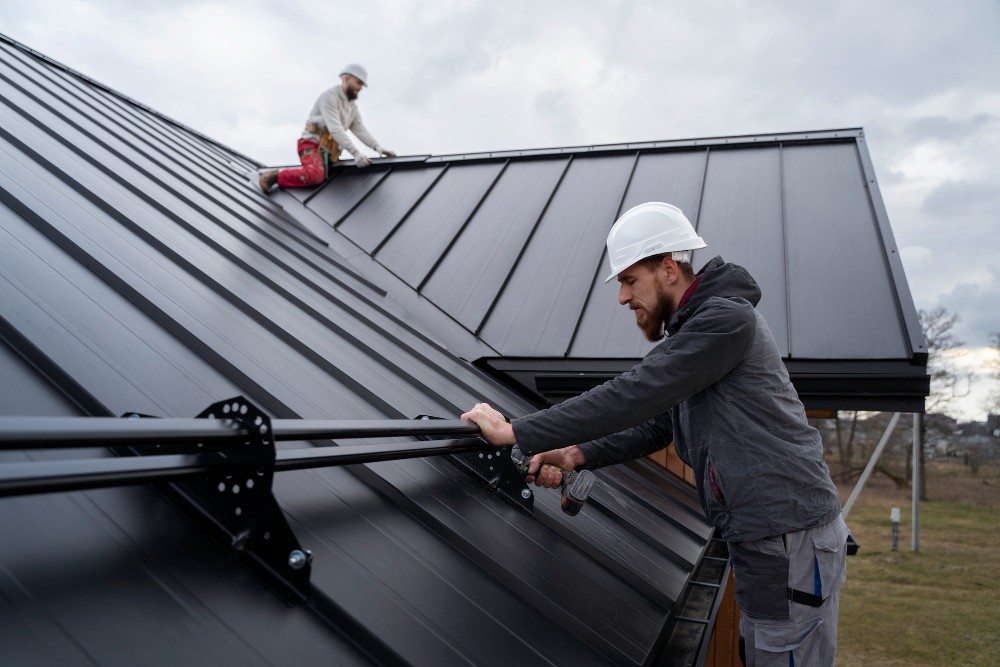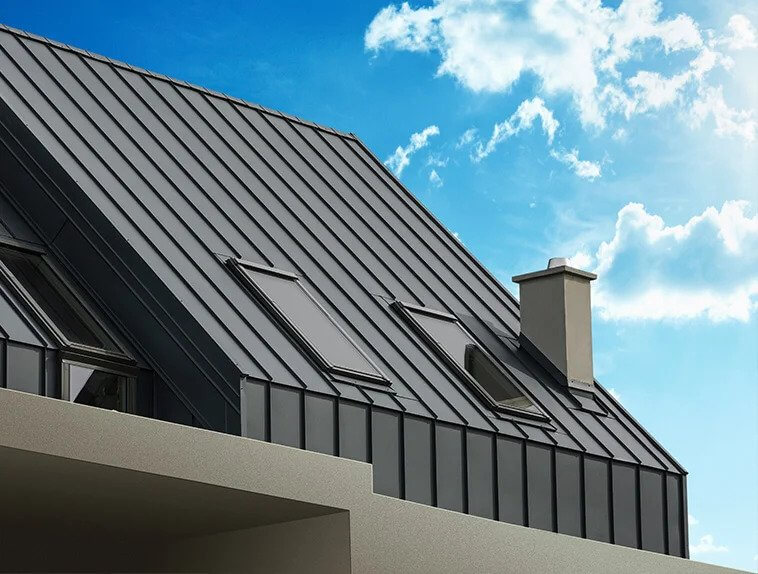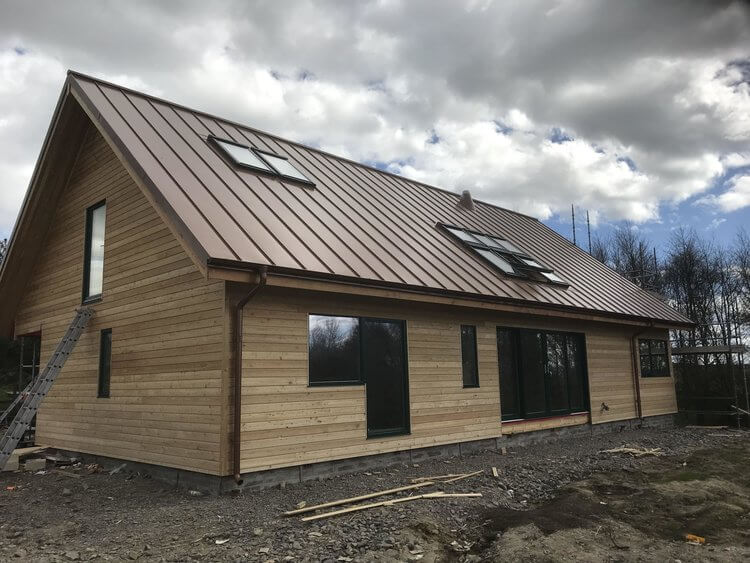How Long Does a Flat Roof Last?
Table of Contents

Flat roofs are a sleek, contemporary roofing choice for both residences and industrial buildings. Nevertheless, one common question householders and property managers ask is: How long does a flat roof last?
As compared to sloped roofs, flat roofs are not effective in draining water, which may impact their durability. The service life of a flat roof depends on numerous factors, including:
- Material Quality
- Installation
- Climate
- Maintenance
In this informative guide, we will discuss the average lifespan of flat roofs, the primary factors impacting their durability, signs that your flat roofs need repairs, and how you can maximise their longevity.
Average Lifespan of a Flat Roof
Flat roofs generally last between 15 to 30 years, but this range may differ considerably based on the type of materials used and maintenance routine. Here is a quick look at how long various flat roofing materials last:
- EPDM (Ethylene Propylene Diene Monomer): 25-30 years
- TPO (Thermoplastic Polyolefin): 20-25 years
- PVC (Polyvinyl Chloride): 20-25 years
- Modified Bitumen: 15-20 years
These numbers are just averages— few roofs last longer with adequate care, while others might fail prematurely because of bad installation or adverse weather.
Major Factors That Influence Flat Roof Longevity
Numerous elements impact how long your flat roof will last. Comprehending these can help you make wise decisions regarding installation and maintenance.
1. Roofing Material
The type of material utilised plays a vital role in durability:
- EPDM is extremely durable, resistant to UV rays, and functions well in intense temperatures.
- TPO & PVC are energy-efficient and resist punctures, but their service life may differ based on quality.
- Modified Bitumen is economical but has a shorter service life.
2. Quality of Installation
Even the finest materials won’t last if installed inappropriately. A badly installed flat roof may develop:
- Improperly sealed seams
- Wrinkles or bubbles in the membrane
- Poor drainage resulting in water pooling
Always hire seasoned professionals like Positive Roofing to guarantee a perfect installation.
3. Climate & Weather Conditions
Severe weather may shorten a flat roof’s service life:
- Hot climates can cause materials to expand and crack with the passage of time.
- Cold regions might result in ice dams and membrane brittleness.
- Coastal areas expose roofs to salt corrosion.
Selecting a material suited to your local climate is necessary.
4. Drainage Efficiency
Since flat roofs do not shed water like sloped roofs, adequate drainage is crucial.
Issues such as blocked drains, defective slopes or ponding water might result in the following:
- Leaks
- Mould
- Structural Damage
5. Maintenance & Repairs
Routine upkeep is the ideal way to extend your roof’s life. Essential maintenance steps include the following:
- Bi-annual inspections (spring and fall)
- Clearing debris (leaves, branches, dirt)
- Swiftly fix small leaks before they worsen
- A professional cleaning every few years
Ignoring maintenance can significantly decrease your roof’s service life.
6. Foot Traffic
Although certain flat roofs can withstand limited foot traffic, frequent walking might compromise the membrane’s integrity. To avoid damage, restrict roof access to essential maintenance tasks.


Signs Your Flat Roof Requires Repairs or Replacement
Flat roofs are a popular choice for commercial and domestic buildings, but they need adequate maintenance to avoid severe issues. If you notice any of these warning signs, it might be time for repairs or a complete replacement.
1. Pooling Water (Ponding)
Flat roofs have a minimal slope, making them susceptible to water accumulation. If water remains standing for more than 48 hours after rain, it can indicate drainage issues or structural flaws. Persistent ponding may result in leaks, mould, and even roof collapse. A professional inspection can help in determining whether repairs or replacements are required.
2. Visible Rips and Tears in the Membrane
Flat roofs rely on a waterproof membrane rather than shingles. If you see noticeable tears, punctures, or holes, immediate action is required. Neglecting these problems may result in seam failures and severe leaks. Small tears might be patchable, but extensive damage usually requires a complete replacement.
3. Flashing That’s Loose or Separating
Flashing seals roof edges and seams to avoid water intrusion. If it appears loose, damaged, or flapping in the wind, water can seep into the structure. Early repairs can avoid major damage, but extreme flashing problems might need a complete roof replacement.
4. Water Stains on Ceilings or Walls
Water spots inside your building are a clear sign of roof leaks. While some moisture might come from condensation, big or dark stains usually indicate a failing roof membrane. A professional roofer can locate the leak and suggest the ideal solution.
5. Membrane Lifting or Flapping in the Wind
High winds can loosen the roof membrane, causing it to lift or flap. If the membrane is no longer securely attached, it won’t provide proper protection. In some cases, the membrane can be reattached, but you may have to undertake replacement in case of severe damage.
6. Cracks in the Roof Coating
Few flat roofs have a white coating for energy efficiency. If this coating develops visible cracks, the underlying membrane is exposed to damage. Swift repairs can help, but vast cracking might mean the roof is nearing the end of its service life.
7. Loose or Exposed Fasteners
Fasteners hold the roof membrane in place. If they become loose because of weather or ageing, the membrane can shift, creating gaps from where water can seep. Reattaching fasteners early can avoid leaks, but extensive loosening might indicate bigger issues.
How to Extend the Lifespan of Your Flat Roof?
Want your flat roof to last as long as possible? Follow the following expert tips:
✅ Schedule Routine Inspections – Catch minor problems before they become expensive repairs.
✅ Keep the Roof Clean – Eliminate debris to avoid water pooling.
✅ Fix Minor Damage Immediately – Minor cracks or punctures can worsen over time.
✅ Apply Protective Coatings – Reflective coatings can enhance UV resistance.
✅ Trim Overhanging Trees – Avoids scratches and debris accumulation.
✅ Hire Professionals for Repairs – DIY fixes usually result in extensive issues.
To Conclude!
A flat roof can be a durable and elegant option for your property—if you choose the correct materials, guarantee adequate installation, and commit to routine maintenance. While the average lifespan is between 15 and 30 years, few roofs last even longer with the proper care. By following the above-mentioned guidelines, you can guarantee your flat roof remains robust, leak-free, and operational for years to come. Remember, a properly maintained roof safeguards your property and also helps you save money in the long term.
At Positive Roofing, we excel in high-quality flat roof installations and maintenance. Whether you require a new roof or want to enhance the life of an existing one, our crew is here to help.
Do you want to get the most out of your flat roof? Contact Positive Roofing today for professional guidance and expert service!
